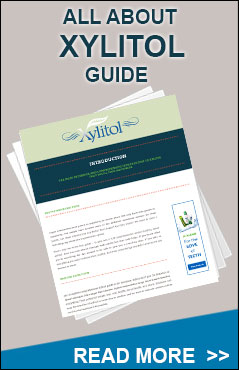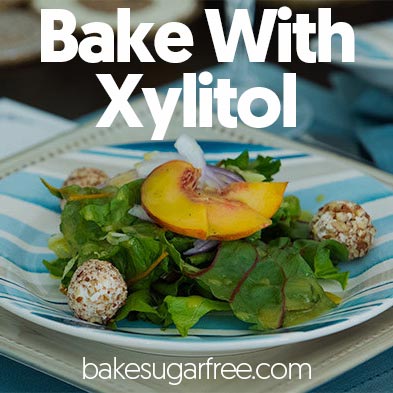About Xylitol
About Xylitol
 What is it about Xylitol that makes it a great alternative to traditional sugars? Xylitol is a naturally occurring carbohydrate, that looks and tastes just like regular table sugar. It is a natural sweetener that can be extracted from any woody fibrous plant material. Commercially it is extracted from renewable resources such as corn cobs, and also from less environmentally sustainable sources such as hardwood. Xylitol also occurs naturally in our bodies – in fact, an average size adult manufactures up to 15 grams of xylitol daily during normal metabolism. Pure xylitol is a white crystalline substance that looks and tastes like sugar.
What is it about Xylitol that makes it a great alternative to traditional sugars? Xylitol is a naturally occurring carbohydrate, that looks and tastes just like regular table sugar. It is a natural sweetener that can be extracted from any woody fibrous plant material. Commercially it is extracted from renewable resources such as corn cobs, and also from less environmentally sustainable sources such as hardwood. Xylitol also occurs naturally in our bodies – in fact, an average size adult manufactures up to 15 grams of xylitol daily during normal metabolism. Pure xylitol is a white crystalline substance that looks and tastes like sugar.
Where Xylitol Comes From
 Xylitol is found widely in nature, most of the fruits and vegetables that we eat on a daily basis have small amounts of xylitol. For commercial purposes xylitol comes from two sources: corncobs or trees. Even though the end resulting product is the same, the process to extract it from these two sources is not.
Xylitol is found widely in nature, most of the fruits and vegetables that we eat on a daily basis have small amounts of xylitol. For commercial purposes xylitol comes from two sources: corncobs or trees. Even though the end resulting product is the same, the process to extract it from these two sources is not.
Corncobs are our preferred source for xylitol, it is much more sustainable and environmentally friendly. Corncobs are a renewable resource and are normally waste at the end of the season. Using corncobs that take 5 months to grow as a source for xylitol is much more sustainable than using trees that take 20 years to grow as a source for xylitol.
There are a number of xylitol production facilities around the world, but most of them are in China. In China most corn is harvested by hand and so at the harvest there are big piles of corncobs that need to be disposed of. To get rid of this they build xylitol production facilities. One would think that we would have an overabundance of corncobs here in America with all the corn we grow, but since we harvest with machinery the cobs are thrown back out into the field and not collected.
Dupont Chemical is the only company that makes xylitol from wood. If you are purchasing xylitol that claims to be made from hardwood you are buying xylitol from Dupont Chemical. They have production facilities in China, North America and Europe.
Again we want to stress that xylitol extracted from wood is the same as the same as from the other sources, xylitol from wood is the same as that extracted from corn. The only reason we think corn sourced xylitol is better is because it is much more sustainable.
Why Use Xylitol:
Xylitol has a delicious, sweet taste, and no unpleasant aftertaste! Xylitol has about a third the calories as table sugar, and is a healthy alternative for diabetics. Not only does it make an excellent sugar substitute, but it aids in the prevention of dental caries, and reduces plaque formation.
FAQs
Get answers to common questions about xylitol, such as what makes xylitol different from other sweeteners, and it being used as a sugar substitute for diabetics.
Why Use Xylitol:
Xylitol has a delicious, sweet taste, and no unpleasant aftertaste! Xylitol has about a third the calories as table sugar, and is a healthy alternative for diabetics. Not only does it make an excellent sugar substitute, but it aids in the prevention of dental caries, and reduces plaque formation.




